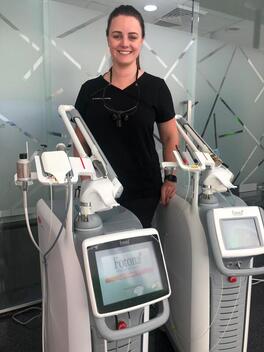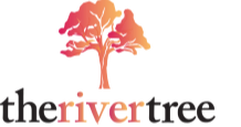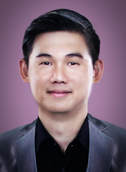 Dr Kristie-Lee Anning
Dr Kristie-Lee Anning By Danny Chan
Unlike most dentists, Dr Kristie-Lee Anning’s first exposure to lasers was in an operating theatre. This was before the registered medical nurse had completed her Bachelor of Dental Science at Charles Sturt University in 2014, yet the laser’s potential for minimally invasive procedures had already piqued her interest. Observing her mentor’s use of the Fotona Fidelis and Lightwalker units at Honeysuckle Dental, the Newcastle surgery where she has been practicing as general dentist since graduation, then whetted her appetite for an in-depth study of the innovation.
The 31-year-old recently became one of the youngest to graduate from the Master’s of Laser Dentistry Program with the Laser & Health Academy (LA&HA). Calling her decision to pursue the course “a no-brainer”, she remarks: “Having experienced clinicians to demonstrate their clinical procedures, protocols and outcomes, while guiding you through your own laser journey is invaluable.”
Dr Anning’s formal introduction to lasers came through a dental-specific laser safety training program that she had attended just as she was embarking on her dentistry career. She knew then and there that her “knowledge of laser dentistry was about to have a very steep learning curve.”
Equipped with “some knowledge of basic parameters and laser physics”, she began to perform basic restorative treatments with the Fotona Fidelis. “My initial thought when I picked up the laser handpiece for the first time was “where’s my touch panel screen with all my presets?” ”
Noting a stark difference between the original Fidelis and the new Lightwalker unit that was used during the laser safety course, she realised that more training was imperative. Over time, through self-practice on extracted teeth, she managed to gain more understanding of how tissue responds to laser and quickly adapted to using both the Fidelis and Lightwalker.
The more time the studious clinician devoted to the latter equipment, however, the more she was intrigued by its myriad untapped applications. After attending a few laser workshops and lecture series on the use of Fotona Lightwalker, ran by early graduates of the LA&HA Master’s in Laser Dentistry Program, she decided to enrol in the course herself.
“A dentist undertakes years of intensive training before picking up a handpiece or a scalpel, learning how to use our armamentarium safely and effectively. A good theory and background in laser physics and protocols are an essential component in delivering safe and effective laser treatments to our patients,” Dr Anning attests.
“A formal education provides the foundation for us to then adapt and develop our own protocols, tailored to our patients’ individual needs.”
The LA&HA Masters course comprises of five modules offered throughout Europe, Canada & Australia. Dr Anning attended separately modules held in Melbourne, Slovenia and France. Besides learning from European professors with “a wealth of knowledge and passion for laser dentistry”, Dr Anning said course attendees had the opportunity to observe these masters delivering laser-focused treatment in their own clinics.
“These smaller learning groups provided more individualised training sessions with the opportunity to see more clinical cases.”
“The greatest gifts” from attending the program, she says unequivocally, are the friendships formed between course mates.
“Not only have we formed global professional relationships where we can look to each other for advice, support and inspiration, but also great social friendships. It truly is a ‘Fotona Family’.”
Armed with newfound knowledge and skills, supported by local as well as global community of Fotona Lightwalker users, Dr Anning’s growing confidence in laser dentistry can be gleaned from her routine use and expanded applications.
“The scope in which I use a laser in general practice is broad, ranging from: Restorative treatment; soft tissue surgery; surgical extractions; gingival recontouring and crown lengthening; aesthetic and functional smile rehabilitation; endodontic treatment; whitening; facial aesthetics; periodontal treatment; and biomodulation.”
“For every patient, I can see the potential to use my Fotona. Patients who have been witness or candidates for me using the laser will often request its use for their procedures.”
The benefits of incorporating a dual-wavelength laser like the Fotona Lightwalker into one’s surgery are incalculable, although Dr Anning highlights procedural speed and accuracy as well as dispensation of local anaesthesia and the dreaded drill as major plusses.
“For treatments such as gingivectomies or reshaping soft tissue,” she continues, “the laser eliminates the need for a scalpel, improves accuracy and healing rates are faster.”
The other, seldom discussed, benefit of laser technology is how quickly patients warm up to them. Showing patient feedback that consistently points to laser adoption as a drawcard, Dr Anning says it further encourages referrals and not only via word of mouth.
“It is not uncommon for me (and my practice) to be referred patients for laser therapy by multidisciplinary health workers. An example of this is referral by physiotherapists, chiropractors and osteopaths for adjunct head and neck biomodulation treatment, or oral soft tissue surgery where indicated.”
Asked for something about laser dentistry that she would most like to share with Aussie peers, Dr Anning chooses frankness over professional decorum:
“It’s a bold statement, but I’ll say it. Laser dentistry will completely revolutionise your patients’ dental outcomes, and the way you, as a clinician think about dentistry.”
No doubt reflecting on her own journey, not least the importance of a formal dental laser education, she inserts this caveat:
“It is important to recognise that just because you have an instrument, does not mean that you should jump in and use it without first understanding how and why you would use this instrument.”


 RSS Feed
RSS Feed
